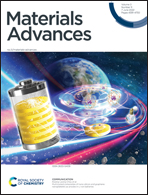Endowment of high buoyancy and antifouling properties upon a simple superamphiphobic cotton fabric†
Abstract
Functional superamphiphobic fabrics have attracted considerable attention for application thanks to their anti-contamination and increased-buoyancy features. A robust, antifouling superamphiphobic fabric was obtained though a convenient one-pot method involving simultaneous reactions of dopamine (DA), 3-aminopropyltriethoxysilane (APTMS) and 1H,1H,2H,2H-perfluorodedecyl-triethoxysilane (PFDTMS). Under suitable alkaline conditions, DA could be oxidized to benzoquinone, and APTMS molecules could undergo hydrolysis and bind together. Due to the steric hindrance of the benzene ring and long alkyl chain, benzoquinone could react with APTMS by a Schiff base reaction and nanospheres can be formed on the fabric surface. The lyophobicity of the fabric was maintained even after undergoing various harsh tests (sand impingement, ultrasonic, ultraviolet irradiation, acid and alkali corrosion), showing significant durability and stability. The superamphiphobic fabric could load 26.38-times and 22.69-times its own weight in water and oil, respectively, displaying strong buoyancy. Therefore, the obtained fabric has promising commercial applications for swim suits and life jackets.



 Please wait while we load your content...
Please wait while we load your content...